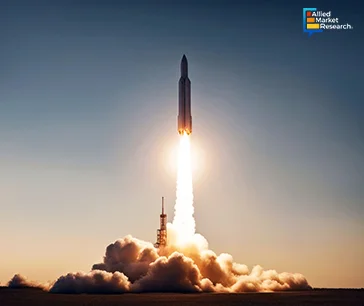Table Of Contents
- Development of Advanced Air Mobility Solutions (AAM) for urban transportation
- Cybersecurity enhancements strengthening the position of the sector
- Sustainable aviation generating numerous opportunities for growth in the domain
- The development of next-generation aircraft significantly reshapes the landscape
- Space exploration and commercialization increasing the revenue share of the domain
- Prominent trends fueling the growth of the landscape in Q3 2024

Lalit Janardhan Katare

Koyel Ghosh
Top 5 Trends in Aerospace and Defense Domain That Have Helped the Sector Consolidate its Position in Q3 2024

Since the last few years, the world has witnessed a huge rise in the number of geopolitical crises and diplomatic tensions. Moreover, the Russia-Ukraine war, the Israel-Palestine conflict, India-China border tensions, terrorist attacks in the Middle East, etc., have further increased the turmoil in international relations. As a result of these events, various developed countries have substantially increased their budget allocations to expand their defense capabilities. Additionally, private companies in the sector are actively engaging in R&D activities to design advanced technologies and cater to the demands of the landscape.
At the same time, conscious efforts taken by developing economies to modernize their armies have also played a major role in the rise of the domain. Apart from these factors, certain trends and advancements have reshaped the sector in the third quarter of 2024. To aid businesses and companies in taking a lead over their peers, Allied Market Research has published a study on the impact of these trends on the landscape.
Development of Advanced Air Mobility Solutions (AAM) for urban transportation
Today, the increasing pace of urbanization and industrialization has aggravated the problem of urban congestion and vehicular traffic in almost all major metropolitan cities. Naturally, the issue of air pollution has also worsened in these industrial towns. As a result, several countries are introducing policies that encourage alternative means of transport. The emergence of advanced air mobility solutions is a consequence of this trend. Many aerospace companies are launching electric vertical takeoff and landing (eVTOL) aircraft to address the challenges caused by traditional ground-level congestion. These urban transit systems have been successful not only in reducing vehicular traffic but have also considerably reduced the carbon footprint of the transportation sector. These advantages have led to a huge increase in demand for eVTOL services, thereby helping the advanced aerial mobility industry to register significant growth in Q3 2024.

Cybersecurity enhancements strengthening the position of the sector
In recent times, many aerospace companies have collaborated with electronics and IT firms to develop advanced cybersecurity networks to protect critical hardware and software from malicious threats. Many organizations are now deploying advanced threat detection systems to identify and mitigate risks comprehensively. The use of artificial intelligence and machine learning to improve the capabilities of these solutions is an important trend in the sector. AI tools analyze large amounts of data quickly and detect patterns that are typical for a cyber threat or attack. Also, ML algorithms identify unusual behaviors, scan the network for weaknesses, and perform repetitive tasks to free up labor for more productive tasks. Thus, these advanced technologies improve the efficiency and productivity of the cybersecurity team and enhance the overall reliability of the military infrastructure.
Sustainable aviation generating numerous opportunities for growth in the domain
One of the biggest developments in the aviation industry is the growing awareness regarding environmental sustainability. In the past few years, several technologies have been developed that reduce the ecological impact and carbon footprint of the aerospace and defense sector. The advent of sustainable aircraft fuel (SAF) is one such example. SAFs are produced from biodegradable feedstocks and have a similar chemistry to that of conventional oil and petroleum products. Ever since the signing of the Paris Climate Accords in 2015, many countries have taken concrete steps to reduce carbon emissions in their economy in order to achieve their net-zero targets. Hence, countries have put in place stringent regulations for aviation companies, thereby mandating the use of SAFs. These factors are expected to help the sustainable aviation fuel industry surge ahead at a stunning CAGR of 56.4% from 2021 to 2030.

The development of next-generation aircraft significantly reshapes the landscape
The aircraft manufacturing landscape has witnessed major shifts in the past few decades. Innovations in the fields of manufacturing, engineering, and material sciences have led to the development of next-generation aircraft that have cutting-edge designs and enhanced capabilities. Leading players in the aviation industry such as Dassault Aviation, Lockheed Martin Corporation, Raytheon Technologies Corporation, Commercial Aircraft Corporation of China, Ltd., etc., are focusing on developing aircraft systems with advanced stealth abilities, higher fuel efficiency, and improved aerodynamics. The integration of AI, data analytics, and ML in next-generation airplanes has helped companies optimize flight operations and boost the safety of the pilot. Apart from the rising geopolitical tensions among certain countries, the increasing global trade and commerce have significantly contributed to the advancement of next-generation aircraft. Furthermore, governmental support for R&D activities in the aviation industry has augmented the growth rate of the landscape.
Space exploration and commercialization increasing the revenue share of the domain
Till the late 1990s, space exploration was an exclusive sphere for government entities. However, with the dawn of the 21st century, many private companies have emerged in the aerospace and defense domain that have made noteworthy strides in the field of space exploration and interplanetary travel. Entrepreneurs like Elon Musk, Jeff Bezos, and Richard Branson have founded private companies that are actively investing in innovative technologies such as space robotics, semiconductors, launch vehicles, rovers, etc. The expanse of companies like SpaceX, Blue Origin, and Virgin Galactic has widened to such an extent that even governmental agencies including, NASA, ESA, JAXA, etc., are partnering with them to launch space missions. The development of reusable rocket systems and advanced propulsion systems has further augmented the growth rate of the space launch services industry.

Prominent trends fueling the growth of the landscape in Q3 2024
The AMR study, thus, highlights the positive impact of the trends and developments on the aerospace and defense domain in Q3 2024. The development of advanced air mobility (AAM) solutions and next-generation aircraft has created favorable conditions for the growth of the sector in the third quarter of 2024. Additionally, the increasing integration of advanced technologies to improve the cybersecurity infrastructure in military installations has helped the sector expand its footprint globally. Finally, the transition toward sustainable aviation has broadened the scope of the domain significantly.
To capitalize on the emerging opportunities in the aerospace and defense industry, feel free to talk to our industry analysts today!

